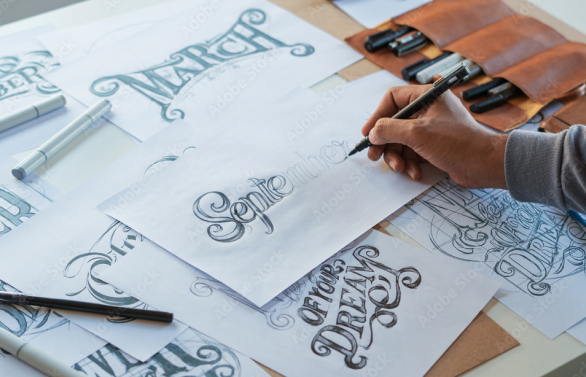Fonts play a crucial role in shaping a brand’s identity and communication. Understanding how to use fonts effectively can enhance your design and ensure it aligns with your brand’s vision. This guide explores key considerations for using fonts associated with major brands, including how font choices impact accessibility and the benefits of selecting custom versus off-the-shelf options. Whether you’re a designer, marketer, or business owner, this information will help you make informed decisions about integrating typography into your projects.











Interstate with a modified ‘t’ to better suit the


Custom Made, Closest is Georgia Bold Font






























How typography affects readability
Typography is more than just choosing a style for text; it’s about making sure that text is easy to read and accessible to everyone, including those with visual impairments or reading difficulties. Accessible typography means choosing fonts and text settings that help all readers understand your content effortlessly. This includes selecting clear, legible fonts and ensuring that the text is well-spaced and contrasts well with its background.

Key Considerations
When selecting fonts for accessibility, consider the following

Font Size
Larger font sizes are easier to read, especially for those with visual impairments. Ensure that text can be resized without losing readability.

Font Style
Simple, clean fonts are more readable than decorative ones. Avoid overly stylized or cursive fonts, which can be harder to decipherread.

Line Spacing
Adequate spacing between lines of text helps prevents crowding, and making makes it easier for readers to follow along.

Contrast
High contrast between text and background improves readability. Ensure that text stands out against its the background, especially for those with color blindness.
The Impact of Font Choice on User Experience The right font can significantly enhance user experience by making content easier to read and understand.
For instance, a well-chosen font with appropriate size and spacing can help prevent eye strain and make it easier for readers to engage with the content. Conversely, a poor font choice can lead to frustration and reduced accessibility, which will affectingaffect how well your message is received.
Additionally, the font choice plays a crucial role in conveying the brand’s personality and creating a cohesive brand experience.
Fonts can communicate different emotions and characteristics — such as professionalism, creativity, or approachability—through their design and readability. For example, a sleek, modern font might suggest innovation and cutting-edge technology, while a classic serif font might convey tradition and reliability
The font you choose can enhance how users perceive your brand and influence their overall experience, reinforcing the brand’s identity and message through its aesthetics and ease of reading.

The role of custom fonts vs. off-the-shelf fonts
Benefits of Custom Fonts
Custom fonts are designed specifically for your brand, offering a unique look that can set you apart from competitors. They allow for:
1
Unique Branding
Custom fonts help create a distinctive visual identity that reinforces your brand’s image and personality.
2
Tailored Design
You can design a font that aligns perfectly with your brand’s aesthetic and functional needs..
3
Consistency
Custom fonts ensure consistent use across all brand materials, and maintain a cohesive look and feel.
Cost and Time Considerations
Custom fonts may require a larger investment of both time and money. Key factors include:
4
Development Costs
Creating a custom font involves hiring a designer or a font foundry, which can be expensive
5
Time to Develop
Designing and refining a custom font takes time, from initial concept to final implementation.
6
ConsistencyOngoing Maintenance
Custom fonts may need updates or adjustments over time, which can add to the cost. Flexibility and Versatility
Off-the-shelf fonts, available from various font libraries, offer a more practical and budget-friendly option. They provide:
7
Wide Selection
A vast array of styles and weights to choose from, catering to various design needs.
8
Immediate Availability
Designing and refining a custom font takes time, from initial concept to final implementation.
9
Adaptability
Many off-the-shelf fonts come within different styles and weights, allowing for flexibility in design while still being cost-effective.
Selecting the right font is an important aspect of creating a strong brand presence. By considering how fonts impact accessibility and weighing the advantages of custom versus off-the-shelf options, you can enhance your design while ensuring it aligns with your brand’s goals. With these insights, you’ll be better equipped to choose fonts that best represent your brand’s identity and effectively communicate your message.




